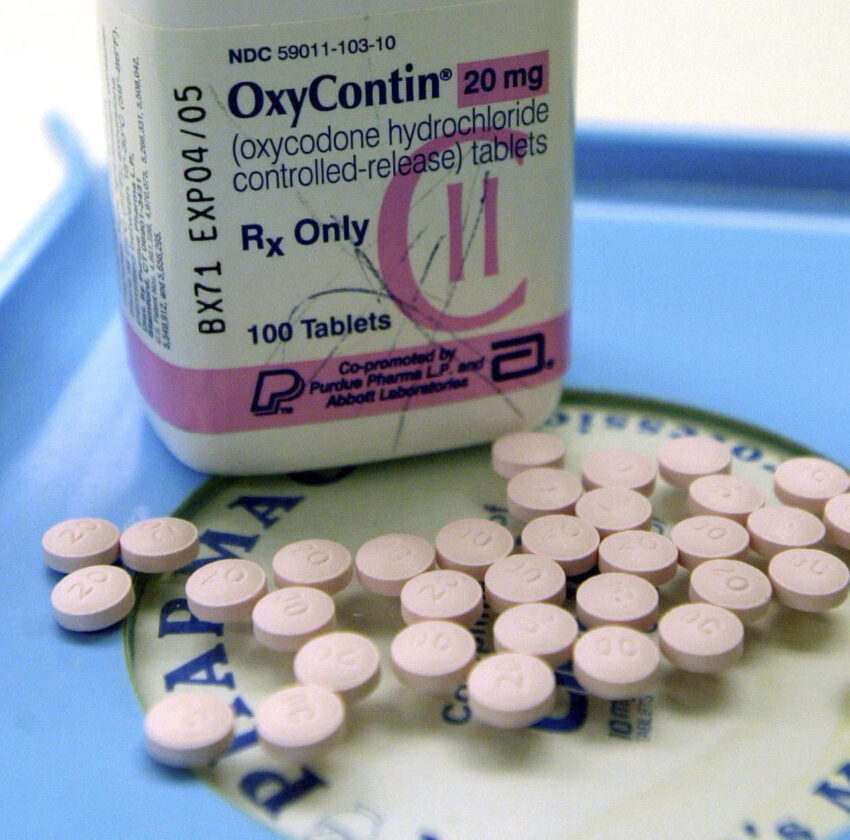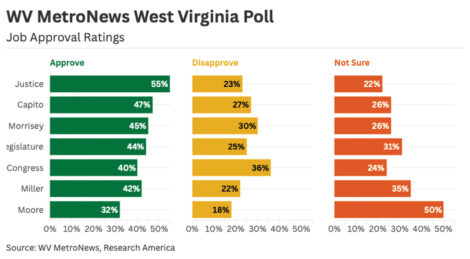Morrisey speaks up on Supreme Court decision on Purdue Pharma settlement

FILE - This July 19, 2001 file photo shows OxyContin tablets at a pharmacy in Montpelier, Vt. The Supreme Court on Thursday, June 27, 2024, rejected a nationwide settlement with OxyContin maker Purdue Pharma that would have shielded members of the Sackler family who own the company from civil lawsuits over the toll of opioids but also would have provided billions of dollars to combat the opioid epidemic. (AP Photo/Toby Talbot, File)
CHARLESTON — A decision by the U.S. Supreme Court Thursday throwing a settlement agreement between states and the creators of OxyContin back to a lower court could mean changes to how much West Virginia could receive. In a split 5-4 decision, the Supreme Court rejected the nationwide settlement between 23 states and more than 2,000 local governments with Purdue Pharma, controlled by the Sackler family. The company created and manufactures the prescription opioid OxyContin. The more than $10 billion settlement – with as much as $6 billion coming from the Sackler family itself – involved the family giving up control of the company, future profits from the newly reorganized Purdue Pharma going towards fighting opioid addiction, and shielded from future civil liability though not the family is not shielded from possible criminal prosecutions. The settlement would have been paid out to state/local governments and individual victims over a 10-year period, including paying out between $3,500 and $48,000 to victims before attorney fees. But some victims and states objected to the settlement provisions shielding the family from future lawsuits. The bankruptcy court rejected the objections. While a district court upheld those objections, a federal appeals court sided with the bankruptcy court. The Sackler family offered another deal if states dropped their objections, but other parties continued to pursue their objections. The majority of Supreme Court justices ruled that the settlement unlawfully shielded Sackler family members from civil liability from future claims by victims of opioid addiction due to use of OxyContin. “…The Sacklers seek greater relief than a bankruptcy discharge normally affords, for they hope to extinguish even claims for wrongful death and fraud, and they seek to do so without putting anything close to all their assets on the table,” wrote Justice Neil Gorsuch for the majority. Justice Brett Kavanaugh, writing the dissent for the minority of the Supreme Court, said the majority ruling steps on the broad authority of bankruptcy courts. “Today’s decision is wrong on the law and devastating for more than 100,000 opioid victims and their families,” Kavanaugh wrote. “The Court’s decision rewrites the text of the U. S. Bankruptcy Code and restricts the long-established authority of bankruptcy courts to fashion fair and equitable relief for mass-tort victims. As a result, opioid victims are now deprived of the substantial monetary recovery that they long fought for and finally secured after years of litigation.” While it is yet unclear how much West Virginia would have received from the Purdue Pharma settlement, it could have been millions of dollars. In a statement Thursday, Attorney General Patrick Morrisey said the state would join others in returning to the U.S. Court of Appeals for the Second Circuit for further negotiations. “We have fought hard – and we’re still fighting – to bring a sense of healing to the state,” Morrisey said. “With this decision, we will double down on our efforts to hold those who are accountable for the damage that’s been done to our State. We’ll be examining new ways to bring this case to closure.” Any potential settlement funds would have been distributed to county and local governments through the West Virginia First formula. The West Virginia First program divides settlement dollars from opioid manufacturers and distributors, with 24.5% going to cities and counties, 3% going to the Attorney General’s Office and 72.5% going to the West Virginia First Foundation. Once funds from future settlements are distributed, the funds can be used by cities and counties for developing programs for substance abuse avoidance, research and education; funding for law enforcement to combat the sale and distribution of drugs; and substance abuse treatment and recovery. According to the U.S. Centers for Disease Control and Prevention, West Virginia saw a 2.7% decrease in 2023 in drug overdose deaths in the state compared to 2022, with 1,350 cases by the end of 2023 compared to 1,315 cases by the end of 2022. However, the same report says the number is likely underreported due to incomplete data. West Virginia still has the highest per-capita drug overdose death rate. “…While litigation and settlements will not bring back the lives lost from the opioid epidemic, our hope is that the money garnered will provide much needed help to those affected the most,” Morrisey said. Steven Allen Adams can be reached at sadams@newsandsentinel.com



